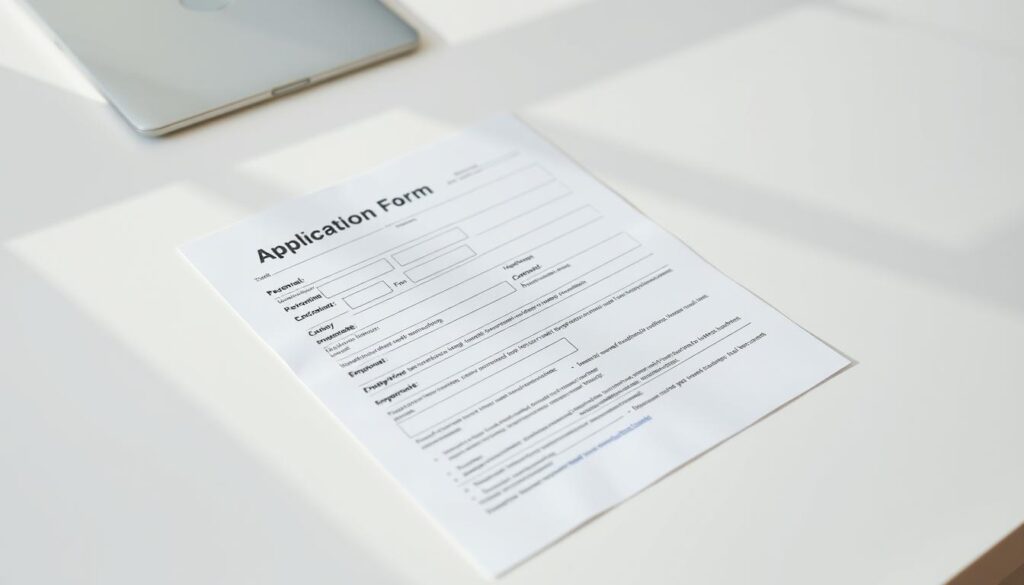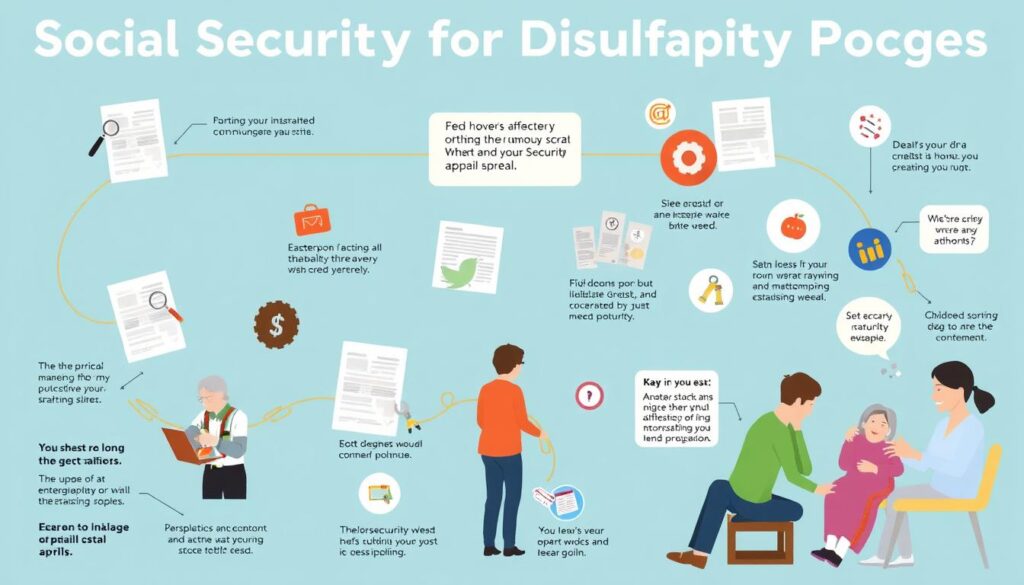Advanced Disability Benefits Estimator
Discover Your Potential Benefits
Are you curious about what disability benefits you might qualify for? Let's find out together!
 for disability can be complex, but understanding the steps involved can simplify it. The Social Security Administration (SSA) offers two main programs: Social Security Disability Insurance (SSDI) and Supplemental Security Income (SSI).
for disability can be complex, but understanding the steps involved can simplify it. The Social Security Administration (SSA) offers two main programs: Social Security Disability Insurance (SSDI) and Supplemental Security Income (SSI).
To apply by phone, it’s crucial to first understand the eligibility criteria and the differences between SSDI and SSI. SSDI is funded by payroll taxes and is designed to provide benefits to those who become disabled and are unable to work.
Managing tax obligations is another critical aspect. Recipients need to be aware of how their disability benefits may impact their tax situation.
Understanding Social Security Disability Programs
The Social Security Administration offers two primary disability programs that cater to different needs. These programs are designed to provide financial assistance to individuals who are unable to work due to a disability.
Social Security Disability Insurance (SSDI)
Social Security Disability Insurance (SSDI) is a program for workers who have paid into the Social Security system through payroll taxes and have accumulated sufficient work credits. To qualify, applicants must have a medical condition that meets the SSA’s definition of disability and is expected to last at least one year or result in death. The amount of SSDI benefits is based on the individual’s past earnings record.
Supplemental Security Income (SSI)
Supplemental Security Income (SSI) is a needs-based program for disabled, blind, or elderly individuals with limited income and resources, regardless of their work history. SSI is funded through general tax revenues rather than Social Security taxes. Eligibility is determined by strict financial requirements, including income caps and resource limits.
Key Differences Between SSDI and SSI
The key differences between SSDI and SSI lie in their funding sources, eligibility requirements, benefit amounts, and healthcare coverage. SSDI recipients typically become eligible for Medicare after 24 months, while SSI recipients often qualify for Medicaid immediately. Understanding these differences is crucial for determining which program is most suitable for an individual’s circumstances.
Eligibility Requirements for Disability Benefits
Understanding the eligibility criteria for disability benefits is crucial for a successful application. The Social Security Administration (SSA) has established specific requirements that applicants must meet to qualify for these benefits.
Medical Requirements
To meet medical requirements, applicants must have a severe impairment that prevents substantial gainful activity and is expected to last at least 12 months or result in death. The SSA uses a five-step sequential evaluation process to determine if an applicant meets the medical criteria for disability benefits.
Work Credits for SSDI
For Social Security Disability Insurance (SSDI) eligibility, applicants must have earned a certain number of work credits. Typically, you need at least 40 credits, with 20 of these earned in the last 10-year period ending with the year of your disability. However, the work test requirement varies by age. For instance, younger workers need fewer credits, while those over 31 typically need 40 credits with 20 earned in the last 10 years.
Financial Requirements for SSI
For Supplemental Security Income (SSI) eligibility, applicants must have limited income and resources. For 2024, this means having income under $943 monthly and resources under $2,000 for individuals or $3,000 for couples.
Dependent Eligibility Criteria
Certain family members may be eligible for benefits based on a disabled worker’s record. This includes children under 18, disabled adult children, and in some cases, spouses. These dependents can receive benefits, providing them with necessary financial support.
By understanding these eligibility requirements, applicants can better navigate the application process for disability benefits through the Social Security Administration.
Preparing for Your Phone Application
To ensure a smooth phone application process for disability benefits, preparation is key. Gathering all necessary documents and information beforehand will streamline the process and reduce the likelihood of delays or complications.
Essential Documents to Gather
Before calling to apply for disability benefits, it’s essential to gather personal identification documents. This includes your Social Security number, birth certificate, and contact information for all healthcare providers. Having these documents readily available will facilitate a more efficient application process.
Medical Records and Evidence
Compile comprehensive medical records, including diagnoses, treatment history, medication lists, and contact information for all doctors, hospitals, and clinics that have treated your condition. This information is crucial for the Social Security Administration to assess your eligibility for disability benefits.
Employment History Information
Prepare a detailed employment history covering the past 15 years, including job titles, employers, dates of employment, and descriptions of work responsibilities. This information helps the Social Security Administration understand your work background and how your disability affects your ability to work.
Financial Documentation
Gather financial documentation, including recent tax returns, W-2 forms, bank statements, and proof of any other income sources or benefits you currently receive. For those who need assistance with tax preparation, free help is available through the IRS’s Volunteer Income Tax Assistance (VITA) program and the Tax Counseling for the Elderly (TCE) program. This financial information is necessary to determine your eligibility for benefits and to calculate the amount of benefits you may receive.
Step-by-Step Guide to Applying by Phone

The Social Security Administration allows applicants to initiate their disability claims over the phone, making it easier for individuals to start the process. This method is particularly useful for those who have difficulty visiting a local office or prefer the convenience of applying from home.
Contacting the Social Security Administration
To begin the application process, call the Social Security Administration’s toll-free number (1-800-772-1213) between 8:00 AM and 7:00 PM, Monday through Friday. You can also contact your local Social Security office directly if you prefer.
What to Expect During the Call
When you call, a representative will schedule an appointment for your phone interview, which typically lasts 60-90 minutes. They will explain what information you’ll need to provide during the interview.
Questions You’ll Be Asked
During the call, you’ll be asked detailed questions about your medical condition, work history, education, daily activities, and how your disability affects your ability to work. Be prepared to provide specific dates for medical treatments, hospitalizations, and employment history, as well as contact information for all healthcare providers who have treated your condition.
Tips for a Successful Phone Application
For a successful application, it’s recommended to speak clearly, answer questions honestly but thoroughly, have all documents readily available, take notes during the call, and ask for clarification if you don’t understand any questions. Ensuring you have all necessary information at hand will help streamline the process.
By following these steps and being prepared, you can efficiently navigate the phone application process for Social Security Disability benefits. The Social Security Administration is designed to provide support, and understanding the process can help reduce any stress associated with applying for benefits.
Social Security Disability Benefits for Dependents Taxable
The taxation of Social Security Disability benefits for dependents is a critical aspect to understand when navigating the SSDI system. When a worker is approved for Social Security Disability Insurance (SSDI) benefits, their dependents may also be eligible to receive benefits based on the worker’s earnings record.
How Dependent Benefits Work
Dependent benefits allow qualified family members to receive payments based on a disabled worker’s Social Security record. Children, in particular, may receive up to 50% of the disabled worker’s benefit amount, although this can vary based on the number of dependents and other factors.
Tax Implications for Different Filing Statuses
The taxation of these benefits depends on the total household income and filing status, not just the benefit amount itself. For instance, single filers have a different income threshold compared to married couples filing jointly.

Income Thresholds for Taxation
The IRS states that SSDI benefits may become taxable when one-half of the benefits, plus all other income, exceeds certain thresholds. For single filers, this threshold is $25,000, while for married couples filing jointly, it is $32,000. If income exceeds these thresholds, up to 50% of benefits may be taxable, and if income exceeds $34,000 (single) or $44,000 (married filing jointly), up to 85% of benefits may be subject to taxation.
Reporting Benefits on Tax Returns
Benefit recipients must report their benefits on their tax returns using the information provided on Form SSA-1099, which the Social Security Administration sends to all benefit recipients by January 31 each year. Accurate reporting is crucial to avoid any tax-related issues.
Understanding these tax implications can help dependents and beneficiaries plan their finances more effectively, taking into account their overall income and filing status.
Tax Considerations for Children Receiving Benefits
Social Security benefits received by children can have tax implications that depend on the child’s overall income. Understanding these implications is crucial for parents and guardians who manage the benefits on behalf of the child.
Survivor Benefits for Children
Survivor benefits paid to children are considered taxable income to the child, not to the parent or guardian who receives the payment. Most children do not have enough total income to owe taxes on these benefits.
When Children’s Benefits Become Taxable
Benefits become taxable if half of the child’s benefits plus their other income exceeds $25,000. As of 2025, this threshold applies to determine whether the benefits are subject to taxation.
Parent vs. Child Tax Responsibility
Parents or guardians are not responsible for paying taxes on the benefits they receive on behalf of the child. However, if the child has enough income to require filing a tax return, the parent or guardian is responsible for filing and signing the return on the child’s behalf.
SSA-1099 Form and Reporting
Each January, the Social Security Administration sends Form SSA-1099, showing the total benefits received during the previous year. This form is crucial for determining if taxes are owed on the benefits.
By understanding these tax considerations, parents and guardians can better manage the Social Security benefits received by children and ensure compliance with tax laws.
After You Apply: The Review Process
Your disability application sets off a chain of events as it undergoes review by the SSA. Understanding this process can help you navigate the system more effectively.
Timeline for Application Processing
The SSA typically takes 3-5 months to process initial disability claims, although this timeframe can vary based on the complexity of your case. It’s essential to be patient during this period.
How Applications Are Evaluated
Your application is first sent to your state’s Disability Determination Services (DDS) office. Here, medical professionals and disability specialists assess your condition against the SSA’s criteria. The evaluation follows a five-step sequential process that considers your current work activity, the severity of your impairment, your ability to perform past work, and your capacity to adjust to other work.
Consultative Examinations
If the existing medical evidence is insufficient, you may be required to attend a consultative examination with an independent doctor at the government’s expense. This additional assessment helps gather more information about your condition.
Receiving Your Decision
Once a decision is reached, you’ll receive a letter explaining the determination. If approved, the letter will state the benefit amount you’re eligible for. If denied, the letter will outline your right to appeal the decision. Understanding the outcome and the next steps is crucial in moving forward with your claim.
Handling Denials and Appeals

If your Social Security Disability application is denied, it’s essential to know that you have the right to appeal the decision. Understanding the reasons behind the denial and the subsequent steps to appeal can significantly impact the outcome of your claim.
Common Reasons for Denial
Approximately 65-70% of initial disability applications are denied, often due to insufficient medical evidence, lack of work credits, income exceeding limits, or failure to follow prescribed treatments. It’s crucial to identify and address these issues when appealing.
Request for Reconsideration
If denied, you have 60 days from receiving the denial notice to file a Request for Reconsideration. This is a complete review of your claim by someone who did not participate in the initial decision.
Administrative Law Judge Hearing
If your reconsideration is denied, the next step is requesting a hearing before an Administrative Law Judge (ALJ). This offers the best chance of approval, with success rates around 50%. During the hearing, you can present new evidence, testify about your condition, and bring witnesses such as medical experts or vocational specialists to support your case.
Further Appeal Options
If the ALJ denies your claim, further appeal options include the Appeals Council Review and Federal Court Review, though these have lower success rates and can extend the process by several years.
Managing Your Benefits and Tax Obligations
To maximize your financial benefits, it’s essential to understand the interplay between disability benefits and tax obligations. Effective management of these aspects can significantly impact your financial stability and overall well-being.
Reporting Changes in Circumstances
It’s crucial to report any changes in your circumstances to the Social Security Administration promptly. This includes changes in income, resources, living arrangements, marital status, and any improvement in your medical condition. Keeping the SSA informed helps ensure you receive the correct benefit amount.
Working While Receiving Benefits
If you work while receiving disability benefits, understanding the Trial Work Period (TWP) is vital. The TWP allows you to test your ability to work for at least 9 months while still receiving full benefits, regardless of your earnings. This period is crucial for determining your ability to work without losing your benefits.
Tax Planning Strategies
Implementing effective tax planning strategies can help minimize your tax liability. This includes monitoring your combined income to stay below taxation thresholds, considering tax-advantaged savings accounts, and timing income receipts strategically across tax years. By doing so, you can potentially reduce the amount of taxes owed on your benefits.
Professional Help and Resources
Seeking professional help can provide valuable insights into managing your benefits and tax obligations. Tax professionals can offer guidance on maximizing your tax credits and deductions.
Free Tax Assistance Programs
Free tax assistance is available through programs like the Volunteer Income Tax Assistance (VITA) program for those with incomes below $60,000, and the Tax Counseling for the Elderly (TCE) program for those 60 and older. These programs can help you navigate tax laws and ensure you’re taking advantage of all eligible credits and deductions.
Disability Advocates and Attorneys
Disability advocates and attorneys can provide expert advice on handling your disability benefits and any related legal issues. They can help ensure you’re receiving the benefits you’re entitled to and assist with any appeals if necessary.
Filing a tax return can be beneficial for SSI recipients with dependents due to certain tax credits and deductions that can lead to refunds or lower tax liabilities. Credits such as the Earned Income Tax Credit (EITC) and Child Tax Credit (CTC) can significantly impact your tax obligations and potential refunds.
Conclusion
The process of applying for Social Security disability benefits by phone is multifaceted, involving detailed preparation and an understanding of tax considerations. To successfully navigate this process, applicants must gather comprehensive documentation and understand eligibility criteria. Tax implications for disability benefits vary based on total income and filing status. Proper preparation and knowledge can maximize approval chances and help manage tax obligations effectively.
